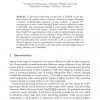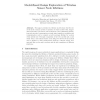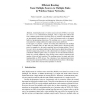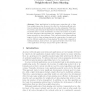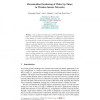111
Voted
EWSN
2007
Springer
15 years 4 months ago
2007
Springer
Abstract. Event-driven operating systems such as TinyOS are the preferred choice for wireless sensor networks. Alternative designs following a classical multi-threaded approach are...
81
Voted
EWSN
2007
Springer
15 years 6 months ago
2007
Springer
109
click to vote
EWSN
2007
Springer
16 years 8 days ago
2007
Springer
This paper presents two lifetime models that describe two of the most common modes of operation of sensor nodes today, triggerdriven and duty-cycle driven. The models use a set of ...
113
Voted
EWSN
2007
Springer
16 years 8 days ago
2007
Springer
Abstract. This paper introduces Crankshaft, a MAC protocol specifically targeted at dense wireless sensor networks. Crankshaft employs node synchronisation and offset wake-up sched...
112
click to vote
EWSN
2007
Springer
16 years 8 days ago
2007
Springer
Initial deployments of wireless sensor networks (WSNs) were based on a many-to-one communication paradigm, where a single sink collects data from a number of data sources. Recently...
99
Voted
EWSN
2007
Springer
16 years 8 days ago
2007
Springer
Many applications in wireless sensor networks rely on data from neighboring nodes. However, the effort for developing efficient solutions for sharing data in the neighborhood is of...
128
Voted
EWSN
2007
Springer
16 years 8 days ago
2007
Springer
Duty-cycling in wireless sensor networks (WSNs) has both beneficial effects on network lifetime and negative effects on application performance due to the inability of a sensor to ...
102
Voted
EWSN
2007
Springer
16 years 8 days ago
2007
Springer
Methods for node localisation in sensor networks usually rely upon the measurement of received strength, time-of-arrival, and/or angle-of-arrival of an incoming signal. In this pap...
92
Voted
EWSN
2007
Springer
16 years 8 days ago
2007
Springer
112
Voted
EWSN
2007
Springer
16 years 8 days ago
2007
Springer
Many applications in wireless sensor networks (WSNs) benefit significantly from organizing nodes into groups, called clusters, because data aggregation and data filtering applied i...
